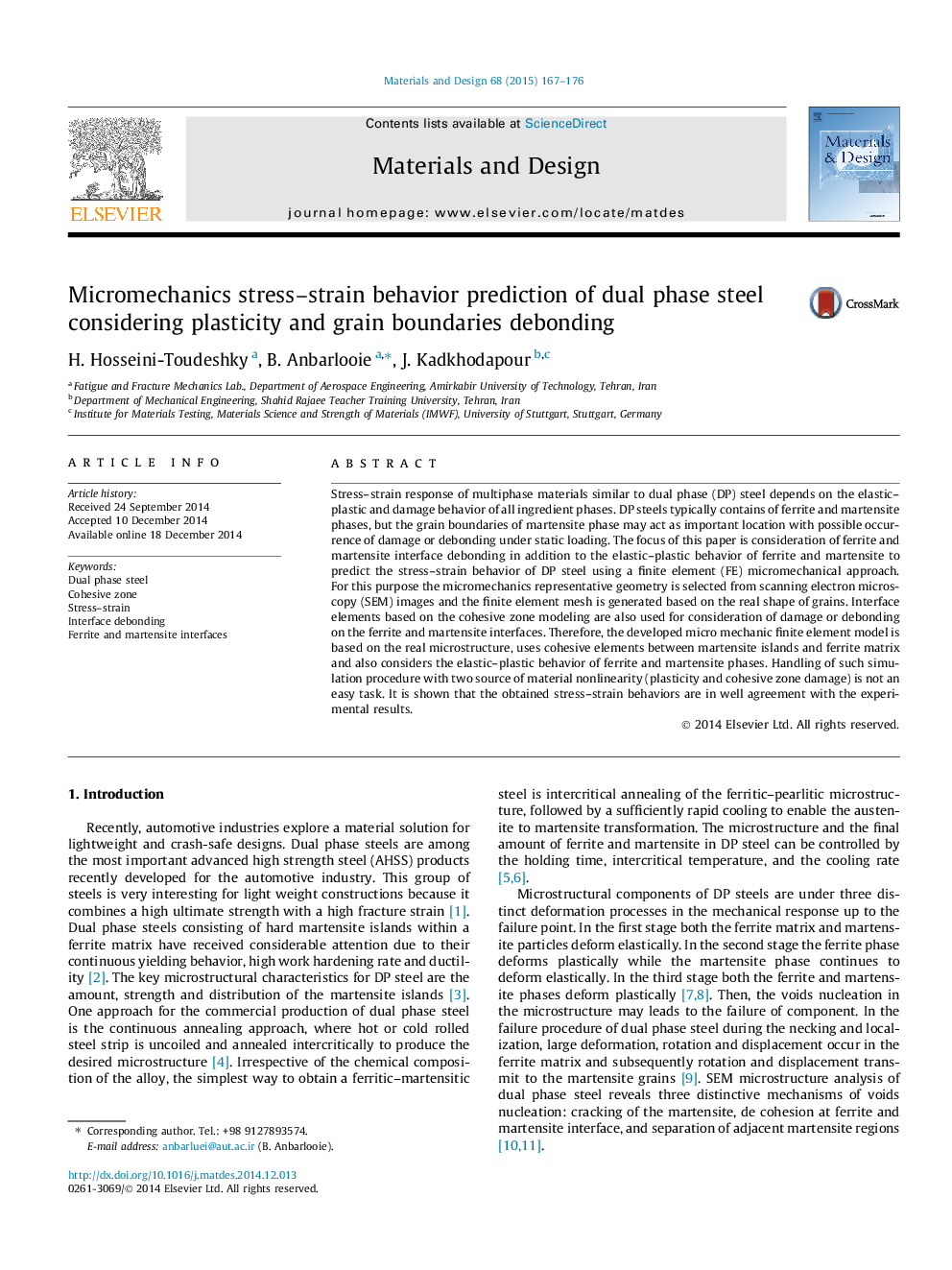| Article ID | Journal | Published Year | Pages | File Type |
|---|---|---|---|---|
| 828732 | Materials & Design (1980-2015) | 2015 | 10 Pages |
•A simulation procedure is utilized to investigate mechanical behavior of DP steels.•Cohesive elements are used for consideration of debonding on the grain boundaries.•The finite element model was first constructed from the SEM images.•Pattern of voids formation is investigated using CZM and elastic–plastic analysis.
Stress–strain response of multiphase materials similar to dual phase (DP) steel depends on the elastic–plastic and damage behavior of all ingredient phases. DP steels typically contains of ferrite and martensite phases, but the grain boundaries of martensite phase may act as important location with possible occurrence of damage or debonding under static loading. The focus of this paper is consideration of ferrite and martensite interface debonding in addition to the elastic–plastic behavior of ferrite and martensite to predict the stress–strain behavior of DP steel using a finite element (FE) micromechanical approach. For this purpose the micromechanics representative geometry is selected from scanning electron microscopy (SEM) images and the finite element mesh is generated based on the real shape of grains. Interface elements based on the cohesive zone modeling are also used for consideration of damage or debonding on the ferrite and martensite interfaces. Therefore, the developed micro mechanic finite element model is based on the real microstructure, uses cohesive elements between martensite islands and ferrite matrix and also considers the elastic–plastic behavior of ferrite and martensite phases. Handling of such simulation procedure with two source of material nonlinearity (plasticity and cohesive zone damage) is not an easy task. It is shown that the obtained stress–strain behaviors are in well agreement with the experimental results.
